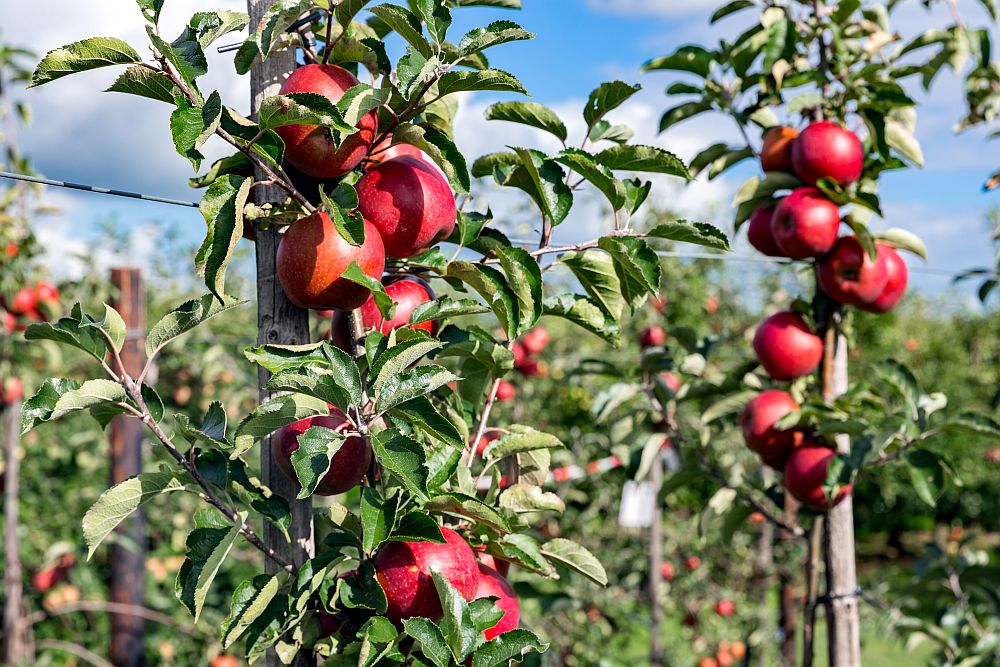
[Image above] Eucalyptus trees serve as the home and food source of koalas. Researchers in Australia and India discovered bark extract from a specific Eucalyptus species can act as a reducing agent in the chemical synthesis of graphene. Credit: David Peterson, Public Domain Photography
Though poor quality graphene is currently a troublesome reality in global supply chains, that issue does not appear to present much of an obstacle to people’s interest in the material. According to a recent report by Grand View Research, the worldwide graphene market will reach US$552.3 million by 2025, expanding at a CAGR of 38.0% over the forecast period 2019–2025.
In particular, graphene oxide (GO) is expected to witness considerable CAGR of over 47.0%. Out of the multiple methods employed for graphene synthesis, solution-based chemical reduction of GO has gained immense importance as it allows for production of graphene at a low cost in bulk quantities.
In solution-based chemical reduction, GO is placed in a solution filled with reducing agents that break the GO carbon-oxygen bonds, freeing carbon atoms to form carbon-carbon bonds and create large graphene sheets. In addition to forming large sheets (perfect for industrial-scale manufacturing), graphene created this way shows particular suitability for many applications, including transparent conductive thin films and polymer composites.
However, chemical reduction of GO comes at a cost. Toxic or explosive chemicals including sodium borohydride, hydrazine hydrate, and dimethyl hydrazine are commonly used for GO reduction. These reducing agents are dangerous to both people and the environment, leading to significant environmental and health concerns.
A movement to develop “green” reducing agents has taken place over the last decade, with materials such as sugar, aloe vera, and wild carrot roots being considered. Regrettably, many of these reducing agents result in graphene that shows highly agglomerated morphologies without the addition of an external stabilizer.
There are a few green reducing agents, though, that show promise. In 2011, Yan Wang, ZiXing Shi, and Jie Yin from Shanghai Jiao Tong University in China found GO reduced well in a green tea solution because the nontoxic, biocompatible tea polyphenol molecules acted as both a reducing agent and a stabilizer. Flash forward eight years, and researchers in Australia and India have proposed a reducing agent made from another plant may work effectively as well.
In a new study published last month in ACS Sustainable Chemistry & Engineering, researchers from RMIT University in Australia and the National Institute of Technology Warangal in India describe a solution-based chemical reduction method for graphene created from Eucalyptus bark extract—specifically, from one of the common Eucalyptus species that koalas eat!
“In the present work, we have chosen the bark of the Eucalyptus globulus tree [Tasmanian blue gum],” explain the researchers in the paper. “Eucalyptus globulus bark extract is rich in 29 polyphenolic compounds. Moreover, these are said to be biologically active compounds due to having excellent oxidant properties and anticancer properties.”
To create their solution, the researchers ground the Eucalyptus bark to a fine powder and heated it in water for 30 minutes, after which they filtered the mixture to collect polyphenol extract. They then mixed GO and the extract in a flask, ultrasonicated and magnetically stirred the contents, and finally washed the resulting graphene with water before leaving it to dry in an oven overnight.

Australian and Indian researchers discovered bark from the Eucalyptus globulus tree acts as an effective “green” reducing agent of graphene oxide. Credit: Forest and Kim Starr, Wikimedia (CC BY 3.0)
Like the polyphenols in the green tea study, the Eucalyptus polyphenols in this study behaved as both a reducing agent and a stabilizer, thus improving the solubility of the graphene in water and other solvents. Also like the green tea study, both green tea and Eucalyptus bark are readily available resources, making the cost of these reducing agents significantly cheaper than current options.
“Our [Eucalyptus] approach could bring down the cost of making graphene from around $USD100 per gram to just 50 cents,” Suresh Bhargava, lead researcher and professor at RMIT, says in the press release.
Based on these two studies, polyphenols appear a promising way to reduce GO in an environmentally-friendly and cheap manner. What plants may scientists investigate next?
The Eucalyptus paper, published in ACS Sustainable Chemistry & Engineering, is “Novel and highly efficient strategy for the green synthesis of soluble graphene by aqueous polyphenol extracts of Eucalyptus bark and its applications in high-performance supercapacitors” (DOI: 10.1021/acssuschemeng.9b01506).
The green tea paper, published in ACS Applied Materials and Interfaces, is “Facile synthesis of soluble graphene via a green reduction of graphene oxide in tea solution and its biocomposites” (DOI: 10.1021/am1012613).
Author
Lisa McDonald
CTT Categories
- Environment


